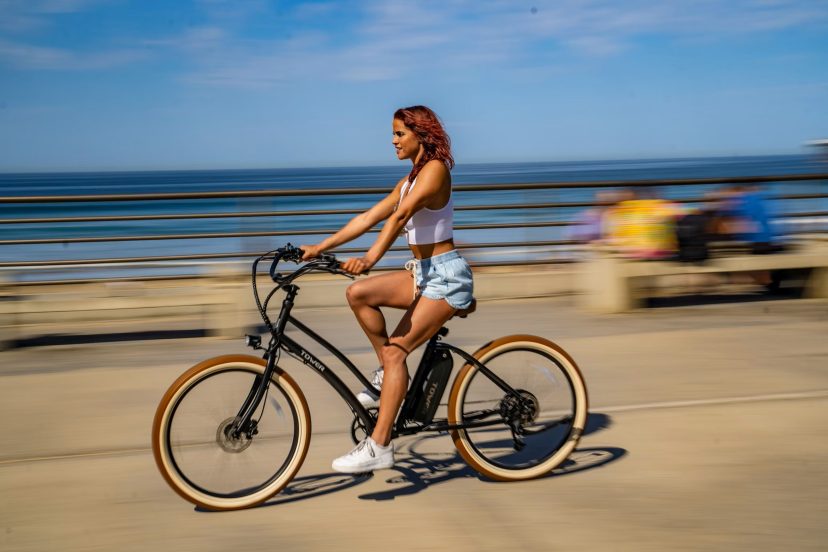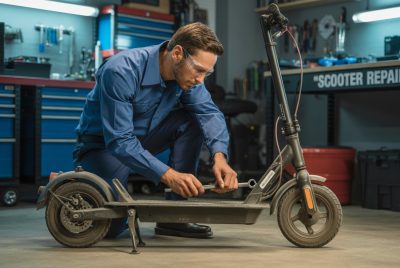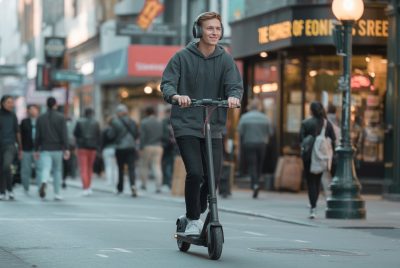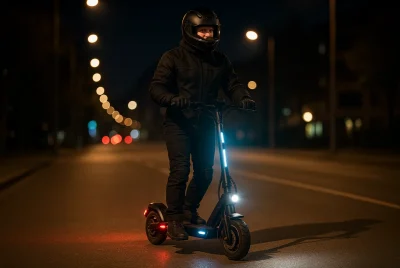How Fast Do Electric Bikes Go?
*We may earn a commission for purchases made using our links. Please see our disclosure to learn more.
As an avid electric bike enthusiast, I’ve experienced the thrill of gliding down the road on two wheels, powered by an electric motor. One of the most common questions I encounter from fellow riders and curious onlookers is, “How fast do electric bikes go?” In this comprehensive guide, I’ll delve into the world of electric bikes, exploring their speed capabilities, the factors that influence their velocity, and everything you need to know to unleash the full potential of these electric-powered wonders.
Understanding Electric Bikes
Before we dive into the speed aspect, let’s take a moment to understand what electric bikes, often referred to as e-bikes, actually are. Electric bikes are bicycles equipped with electric motors that assist the rider’s pedaling efforts. These motors are powered by rechargeable batteries, providing an extra boost to your pedaling power. Think of them as your trusty pedal-powered bicycle, with a turbocharged engine for when you need that extra push.
Electric bikes come in various shapes and sizes, from sleek city commuters to rugged mountain bikes. The versatility and eco-friendliness of e-bikes have made them increasingly popular in recent years. They offer a sustainable and fun mode of transportation, whether you’re commuting to work or exploring scenic trails.
Factors Affecting Electric Bike Speed
The speed of an electric bike depends on several factors, each of which plays a significant role in determining just how fast these machines can go. Understanding these factors can help you choose the right electric bike for your needs and expectations. Here are the primary factors to consider:
1. Motor Power
The wattage of the electric motor is a crucial factor in determining the speed of an electric bike. Higher wattage motors generally provide more power, resulting in faster speeds. Motors typically range from 250 watts for entry-level models to 750 watts or more for high-performance e-bikes. When selecting an electric bike, consider your intended use. For city commuting, a lower wattage motor may suffice, while off-road enthusiasts may prefer the power of a higher wattage motor for tackling challenging terrains.
2. Battery Capacity
The capacity of the e-bike’s battery affects how long it can sustain high speeds. Bikes with larger battery capacities tend to have a longer-lasting high-speed capability. Battery capacity is measured in watt-hours (Wh), and a higher Wh rating means more energy storage. Keep in mind that using your e-bike at maximum speed for extended periods will drain the battery faster. If you’re planning long rides at high speeds, investing in a bike with a larger battery is advisable.
3. Rider’s Weight
The weight of the rider can influence the bike’s speed, especially when climbing hills or accelerating. Lighter riders may experience faster speeds, as the motor has to exert less effort to propel the bike forward. However, most e-bikes are designed to accommodate a wide range of rider weights, making them suitable for riders of varying sizes.
4. Terrain
The terrain you’re riding on matters. Flat, smooth roads allow for higher speeds, while steep hills can significantly impact your e-bike’s velocity. Electric bikes are equipped with sensors that detect the rider’s pedal input and adjust the motor’s assistance accordingly. When facing uphill challenges, the motor provides more power to assist with the climb. On descents or flat stretches, the motor may reduce its assistance to conserve battery power.
5. Bike Weight
The weight of the e-bike itself plays a role in determining speed. Lighter electric bikes are generally quicker than heavier ones. However, the weight of the bike can also affect stability and handling, especially at high speeds. Many manufacturers strive to strike a balance between weight, durability, and performance in their e-bike designs. It’s essential to consider the overall weight of the bike when making your selection.
6. Tire Type and Pressure
The type of tires and their pressure can influence your electric bike’s speed. Sleek, narrow tires with high pressure reduce rolling resistance, allowing for faster speeds on smooth roads. In contrast, wider, knobby tires with lower pressure provide better traction for off-road adventures but may limit top speed on pavement. Maintaining the right tire pressure is crucial for optimizing performance, so be sure to check and adjust your tire pressure regularly.
Now that we have a grasp of the factors influencing electric bike speed, let’s explore the different classes of electric bikes and their respective speed capabilities.
Electric Bike Classes
Electric bikes are categorized into different classes based on their speed and assistance levels. These classes are regulated by law in various regions to ensure safe and responsible e-bike use. Let’s break down the three main classes:
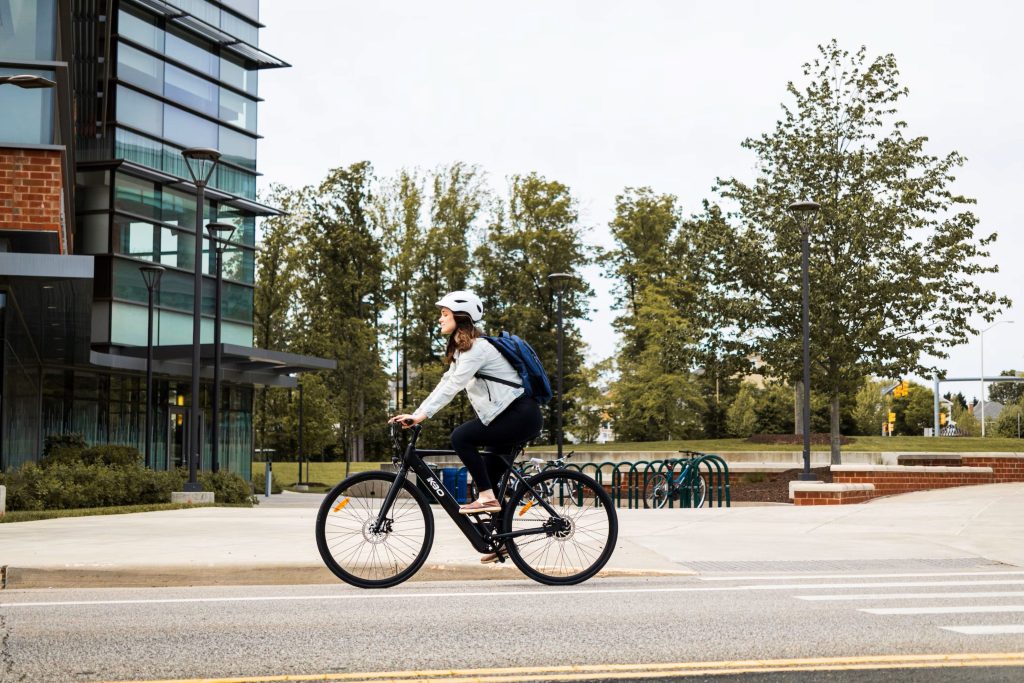
Class 1 Electric Bikes
Class 1 e-bikes are equipped with pedal-assist motors that provide assistance up to a maximum speed of 20 miles per hour (32 kilometers per hour). These bikes are perfect for leisurely rides and commutes within city limits. Class 1 e-bikes are often preferred by riders who want the benefits of electric assistance while still enjoying a traditional cycling experience. They’re great for reducing commute times and making uphill climbs more manageable.
Class 2 Electric Bikes
Class 2 electric bikes also feature a maximum speed of 20 miles per hour (32 kilometers per hour). However, they come with a throttle, allowing riders to reach that speed without pedaling continuously. This class is popular among riders who prefer less pedaling effort and may have physical limitations that make pedaling challenging. Class 2 e-bikes offer a comfortable and effortless way to get around, making them ideal for those seeking a more relaxed riding experience.
Class 3 Electric Bikes
Class 3 e-bikes are designed for those who crave speed and want a more exhilarating riding experience. Additionally, these bikes can reach a maximum assisted speed of 28 miles per hour (45 kilometers per hour). Furthermore, Class 3 e-bikes are often favored by commuters covering longer distances or riders looking for a sportier feel.Keep in mind that, in some regions, Class 3 e-bikes may be subject to additional regulations or require a special license, so be sure to check your local laws before purchasing one.
Custom Electric Bike Speed
Some electric bike enthusiasts can’t resist the urge to push the boundaries of their machines. They modify their e-bikes to achieve even higher speeds, sometimes exceeding the class limits. However, it’s essential to understand that these customizations may not be legal and can compromise safety. Customizing an e-bike typically involves upgrading the motor, increasing the battery’s voltage, or tweaking the controller settings. While these modifications can indeed boost speed, they may void warranties, violate local regulations, and put you at risk of accidents. If you’re considering customizing your e-bike, consult with experts and ensure you adhere to safety and legal guidelines.
Legal Regulations
Before you embark on your electric bike adventure, it’s crucial to familiarize yourself with the legal regulations in your area. Speed limits, helmet requirements, and where you can ride may vary from place to place. Electric bikes are subject to different laws depending on the region, so here are some general considerations:
Speed Limits: As mentioned earlier, the maximum speed of your electric bike may be limited by its class and local regulations. Always adhere to these speed limits to ensure your safety and legal compliance.
Helmet Requirements: Many regions require helmet use for e-bike riders, especially for Class 3 e-bikes. Regardless of the legal requirements, wearing a helmet is a vital safety precaution.
Bike Lanes and Roads: Know where you can legally ride your e-bike. Some areas may restrict electric bikes from certain bike paths or pedestrian areas. Be aware of local regulations to avoid fines and conflicts with other road users.
Licensing: In most places, you do not need a license to ride a Class 1 or Class 2 electric bike. However, Class 3 e-bikes may require a special license in some regions. Check with your local authorities to understand the licensing requirements in your area.
Age Restrictions: Some regions may have age restrictions for operating Class 3 e-bikes. Ensure you meet the age requirements before purchasing or riding one.
Always stay informed about the specific regulations in your locality to ensure a safe and enjoyable electric bike experience.
Safety Considerations
Riding an electric bike at high speeds can be exhilarating, but it also comes with added responsibility. Here are some safety considerations to keep in mind:
- Wear a Helmet: A helmet is your best friend when it comes to safety. Always wear one, regardless of your riding speed.
- Obey Traffic Rules: Follow all traffic rules and signals, just like any other vehicle on the road.
- Maintain Your Bike: Regularly inspect and maintain your electric bike to ensure it’s in top working condition.
- Be Aware of Surroundings: Stay vigilant and be aware of your surroundings, especially when riding at high speeds.
Range vs. Speed
It’s important to note that there’s often a trade-off between speed and battery range in electric bikes. Riding at higher speeds can drain your battery faster. Consider your intended usage and the terrain you’ll be covering to strike the right balance between speed and range. If you need to cover long distances at high speeds, investing in a higher-capacity battery is advisable.
When planning your rides, keep in mind that most e-bikes offer different levels of pedal assistance. You can adjust the level of assistance based on your desired speed and the terrain you’ll encounter. Using a lower assistance level when cruising at a moderate pace can help conserve battery power and extend your range.
Conclusion
Electric bikes offer a fantastic blend of convenience, eco-friendliness, and exhilarating speed. Whether you prefer a leisurely ride or crave the thrill of high-speed travel, there’s an e-bike out there for you. Just remember to ride safely, adhere to local regulations, and enjoy the journey. The world of electric biking is evolving, and it’s an exciting time to be part of this eco-conscious and exhilarating community.
Frequently Asked Questions (FAQs)
Q1. Are electric bikes as fast as regular motorcycles?
No, electric bikes are not as fast as regular motorcycles. The speed of electric bikes is typically limited to 20-28 miles per hour, depending on the class and local regulations.
Q2. Can I modify my electric bike to go faster?
While it’s possible to modify an electric bike for higher speeds, it may not be legal or safe. It’s essential to check local regulations and consider safety implications before attempting any modifications.
Q3. Do I need a license to ride an electric bike?
In most places, you do not need a license to ride a Class 1 or Class 2 electric bike. However, Class 3 e-bikes may require a special license in some regions.
Q4. How far can I travel on an electric bike at its top speed?
The range of an electric bike at its top speed depends on factors like battery capacity, terrain, and rider weight. On average, you can expect a range of 20-50 miles at top speed.
Q5. Are electric bikes suitable for long-distance commuting?
Yes, electric bikes, especially Class 3 models, are suitable for long-distance commuting. They offer a faster and eco-friendly alternative to traditional commuting methods.

